xboxisdead
IB Expert
- Messages
- 1,195
- Reaction score
- 28
- Gender
- Male
- Religion
- Islam
This Cartoon Explains How the Rich Got Rich and the Poor Got Poor
Something massive and important has happened in the United States over the past 50 years: Economic wealth has become increasingly concentrated among a small group of ultra-wealthy Americans.
You can read lengthy books on this subject, like economist Thomas Piketty's recent best-seller, Capital in the Twenty-First Century (the book runs 696 pages and weighs in at 2.5 pounds). You can see references to this in the campaigns of major political candidates this cycle, who talk repeatedly about how something has gone very wrong in America.
Donald Trump's motto is to make America great again, while Bernie Sanders's campaign focused on reducing income inequality. And there's a reason this message is resonating with voters:
It's grounded in 50 years of reality.
You can see lots of discussion and debate and political fighting over who has wealth in America, and whether that should change. Or, you can look at the the cartoon below to understand how the distribution of wealth has changed in America, and why.
Let's say the 100 figures below represent every household in America
The poorest 20 percent are wearing red shirts. The second 20 percent are wearing orange, and so on:
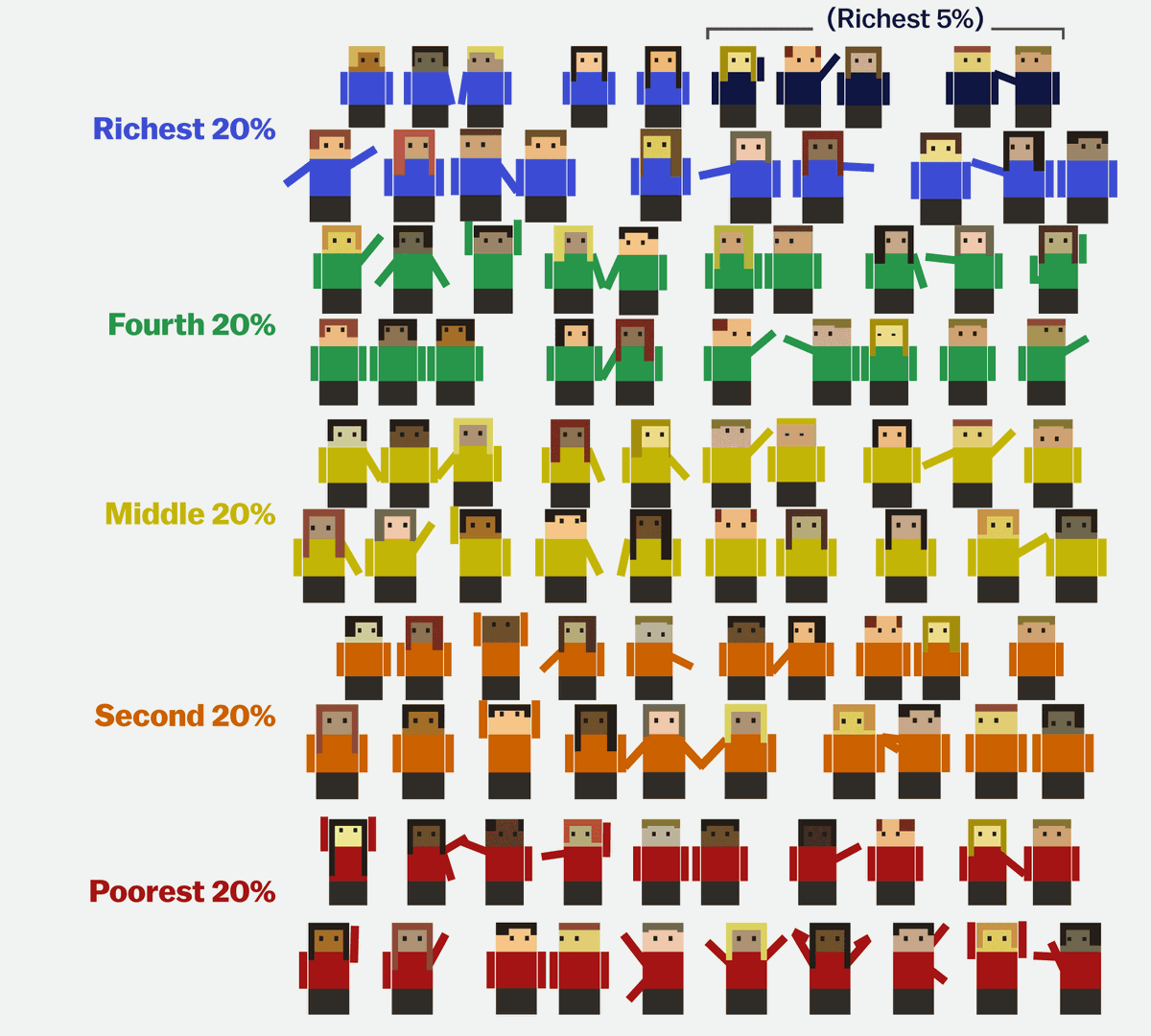
And let's say the dollar bills below represent all the income in America:

In 1967, this is how that $100 was split up:
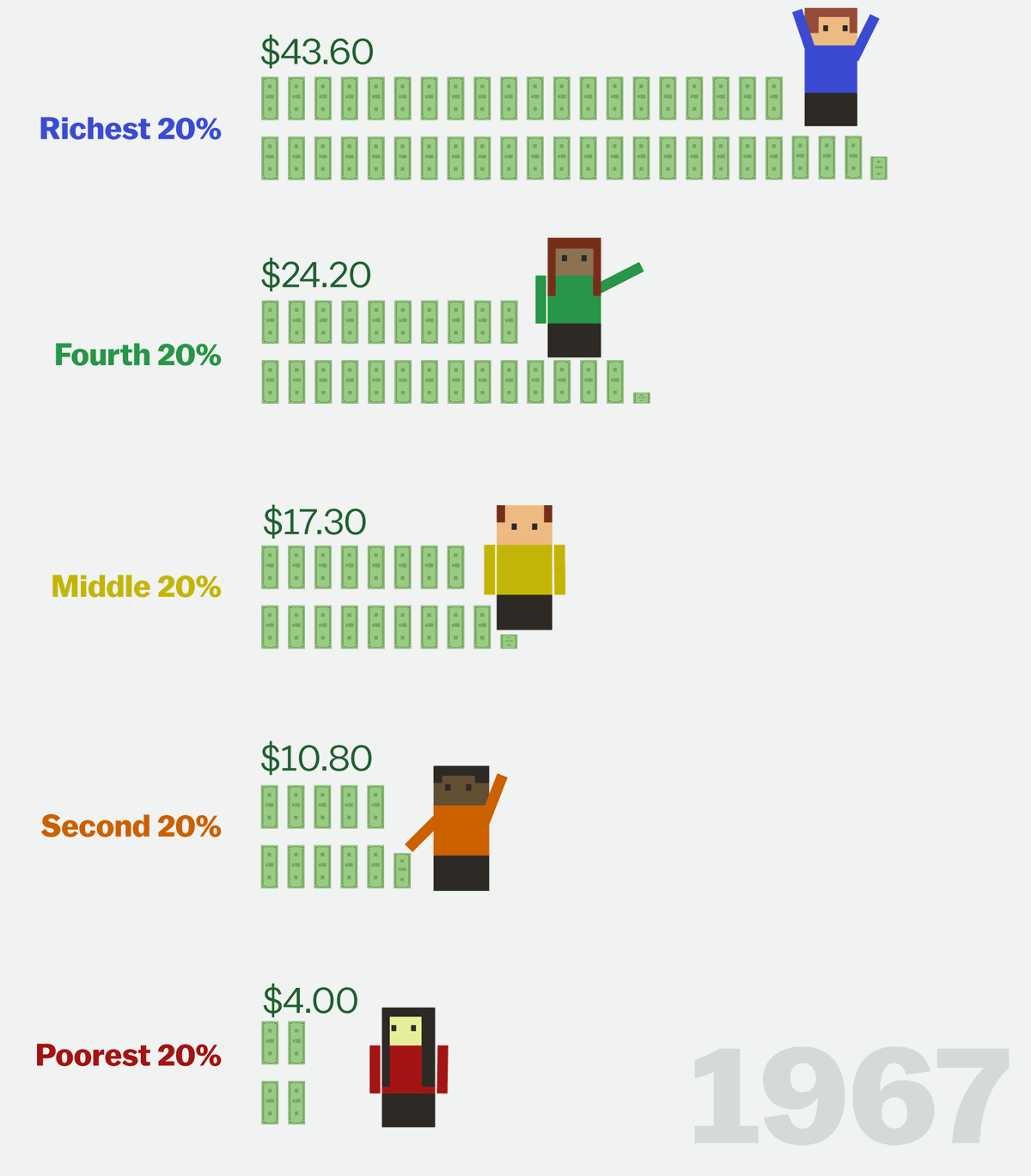
Things stayed about the same for the next decade and a half.
Then in 1981, before Ronald Reagan became president, the wealthy began to get wealthier while the poor got poorer.
By the time Reagan left office in 1989, this is how that $100 was split up
Notice how everyone but the richest has a smaller portion of the money.
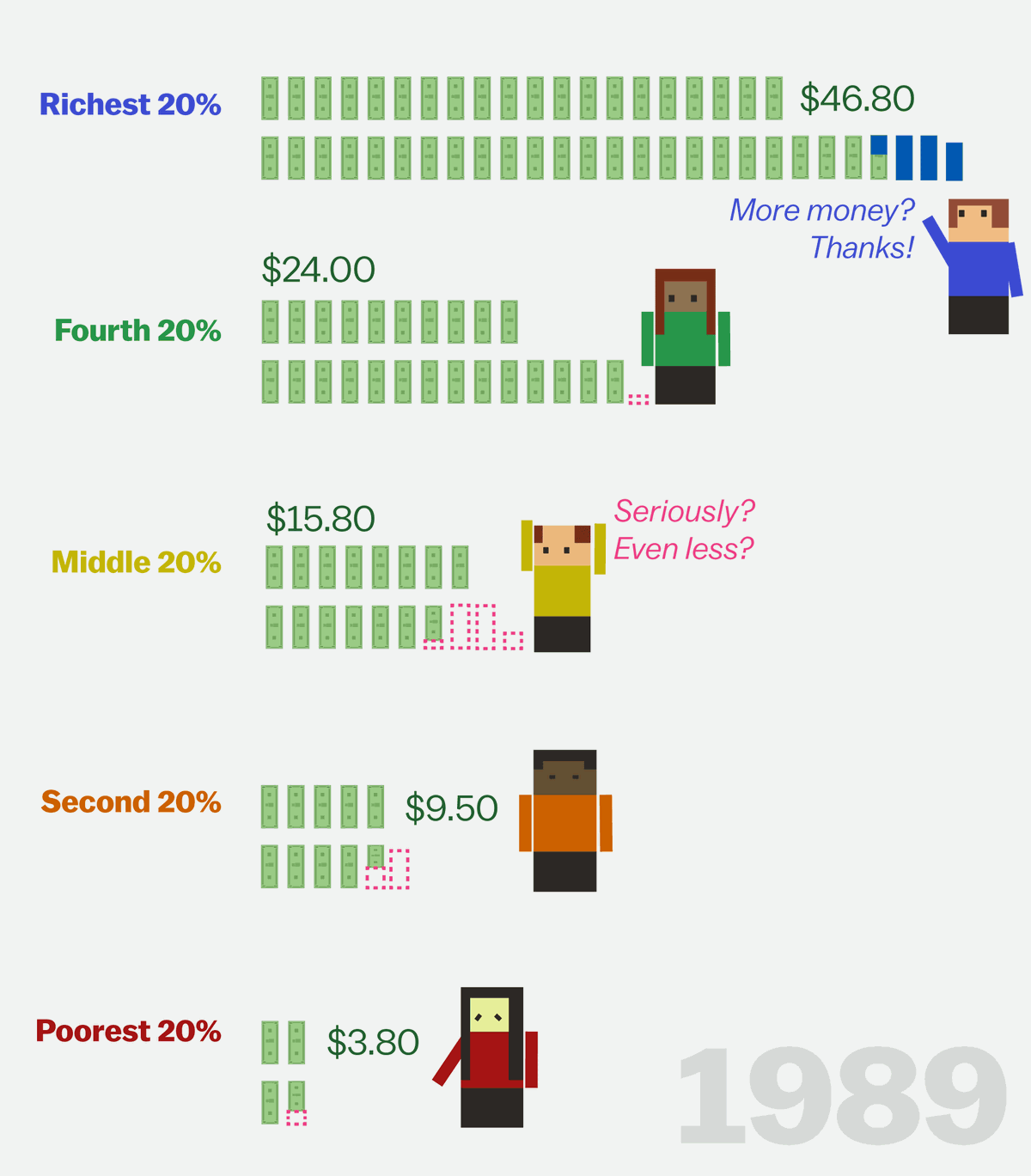
And that trend continued
Here's what it looked like in 2014, six years into President Barack Obama's term:
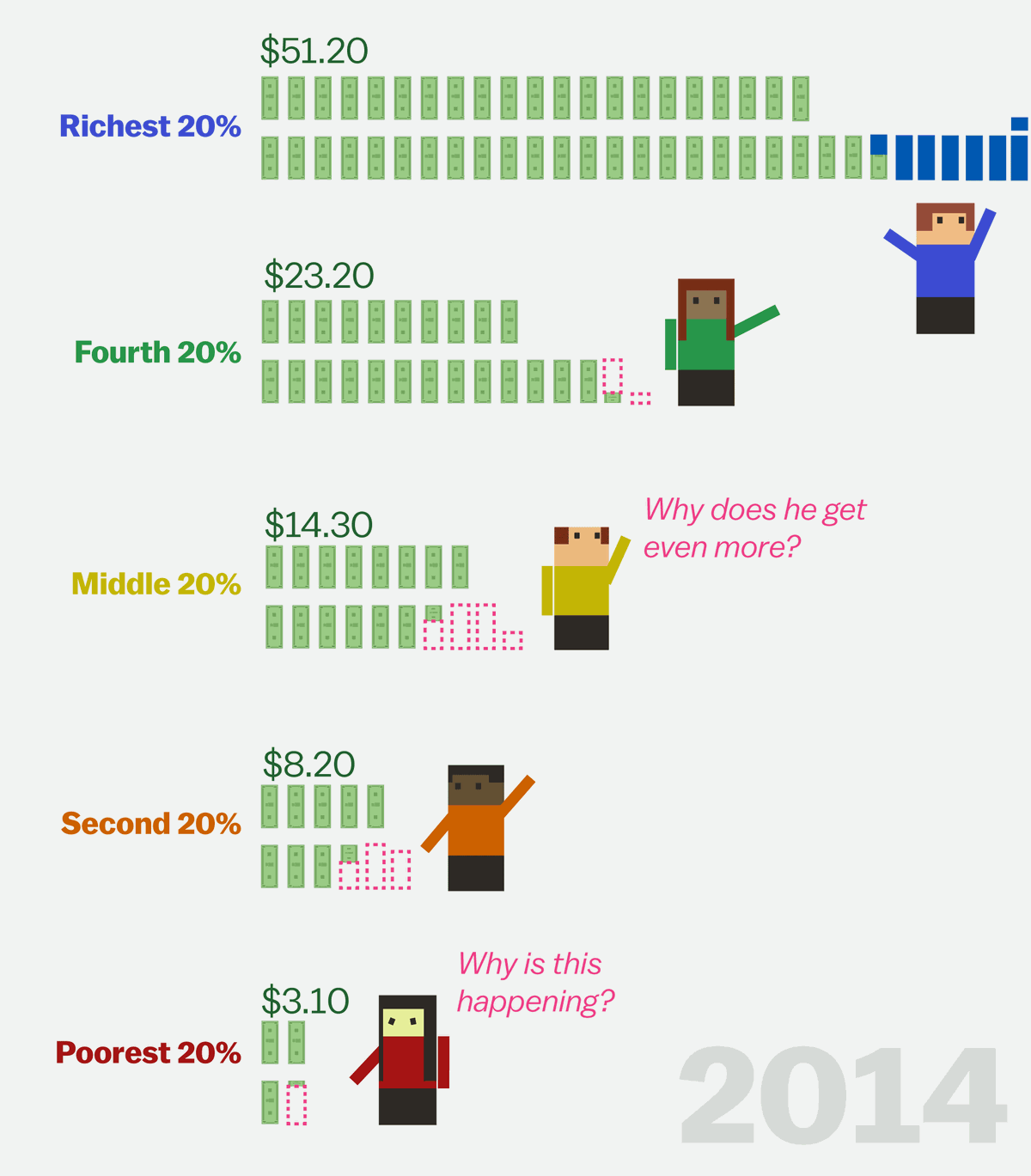
In short, we've seen quite an increase in income inequality since the late-1970s.
There are many reasons economists believe wealth inequality is a bad thing
One reasons is it means everyone doesn't share America's economic growth. Another reason is that it prohibits social mobility — and it turns out social mobility in the US might be worse than once thought.
One metaphor often used is that when the rungs of a ladder get further apart, it's harder to climb.
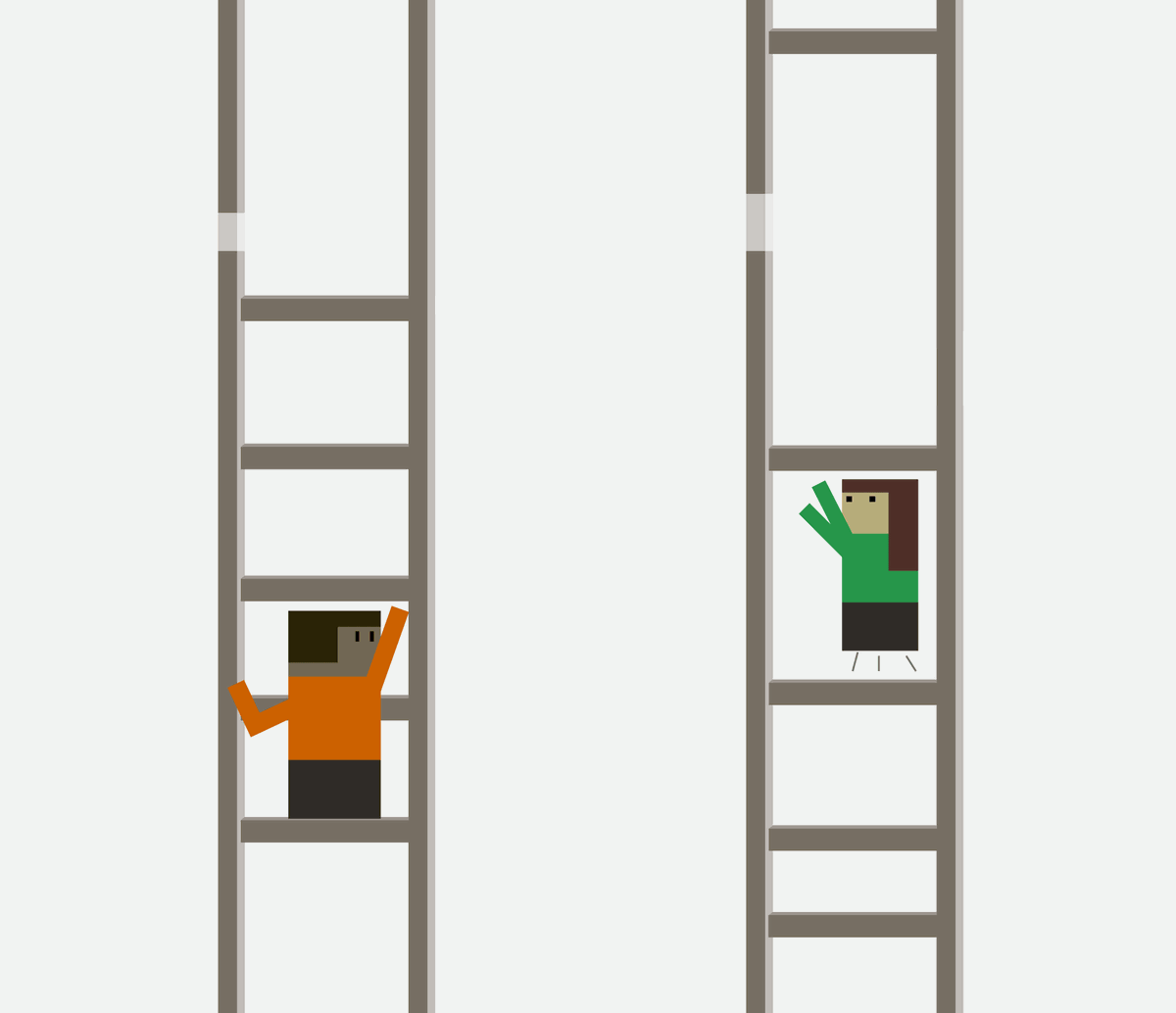
Read more: https://getpocket.com/explore/item/this-cartoon-explains-how-the-rich-got-rich-and-the-poor-got-poor
Something massive and important has happened in the United States over the past 50 years: Economic wealth has become increasingly concentrated among a small group of ultra-wealthy Americans.
You can read lengthy books on this subject, like economist Thomas Piketty's recent best-seller, Capital in the Twenty-First Century (the book runs 696 pages and weighs in at 2.5 pounds). You can see references to this in the campaigns of major political candidates this cycle, who talk repeatedly about how something has gone very wrong in America.
Donald Trump's motto is to make America great again, while Bernie Sanders's campaign focused on reducing income inequality. And there's a reason this message is resonating with voters:
It's grounded in 50 years of reality.
You can see lots of discussion and debate and political fighting over who has wealth in America, and whether that should change. Or, you can look at the the cartoon below to understand how the distribution of wealth has changed in America, and why.
Let's say the 100 figures below represent every household in America
The poorest 20 percent are wearing red shirts. The second 20 percent are wearing orange, and so on:

And let's say the dollar bills below represent all the income in America:

In 1967, this is how that $100 was split up:

Things stayed about the same for the next decade and a half.
Then in 1981, before Ronald Reagan became president, the wealthy began to get wealthier while the poor got poorer.
By the time Reagan left office in 1989, this is how that $100 was split up
Notice how everyone but the richest has a smaller portion of the money.

And that trend continued
Here's what it looked like in 2014, six years into President Barack Obama's term:

In short, we've seen quite an increase in income inequality since the late-1970s.
There are many reasons economists believe wealth inequality is a bad thing
One reasons is it means everyone doesn't share America's economic growth. Another reason is that it prohibits social mobility — and it turns out social mobility in the US might be worse than once thought.
One metaphor often used is that when the rungs of a ladder get further apart, it's harder to climb.

Read more: https://getpocket.com/explore/item/this-cartoon-explains-how-the-rich-got-rich-and-the-poor-got-poor
